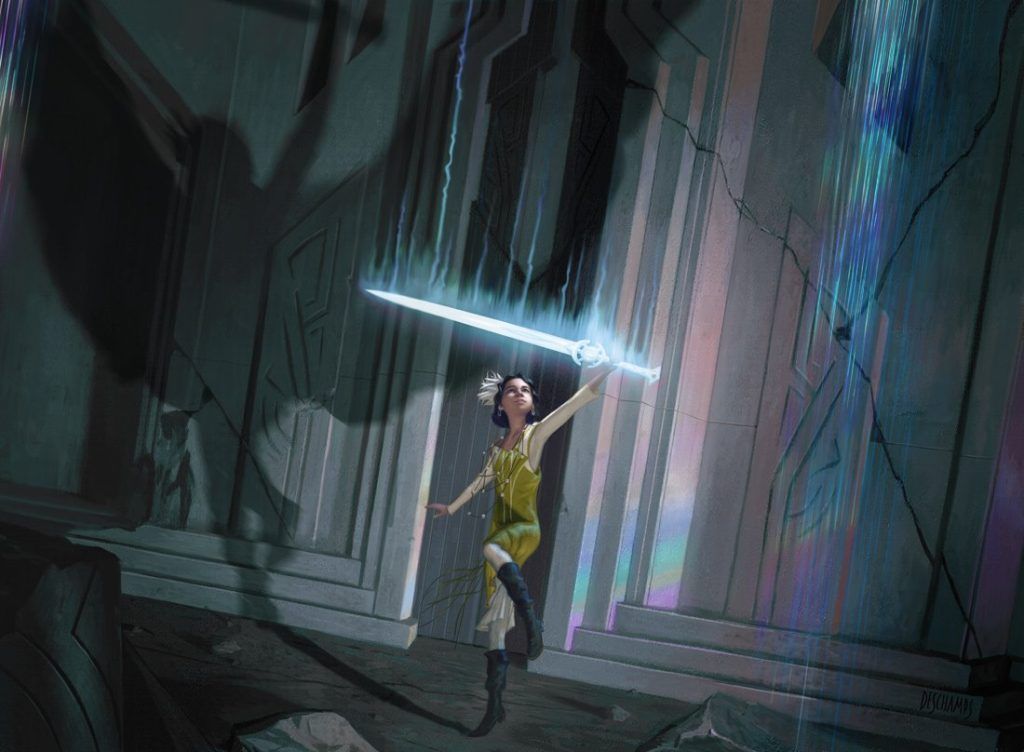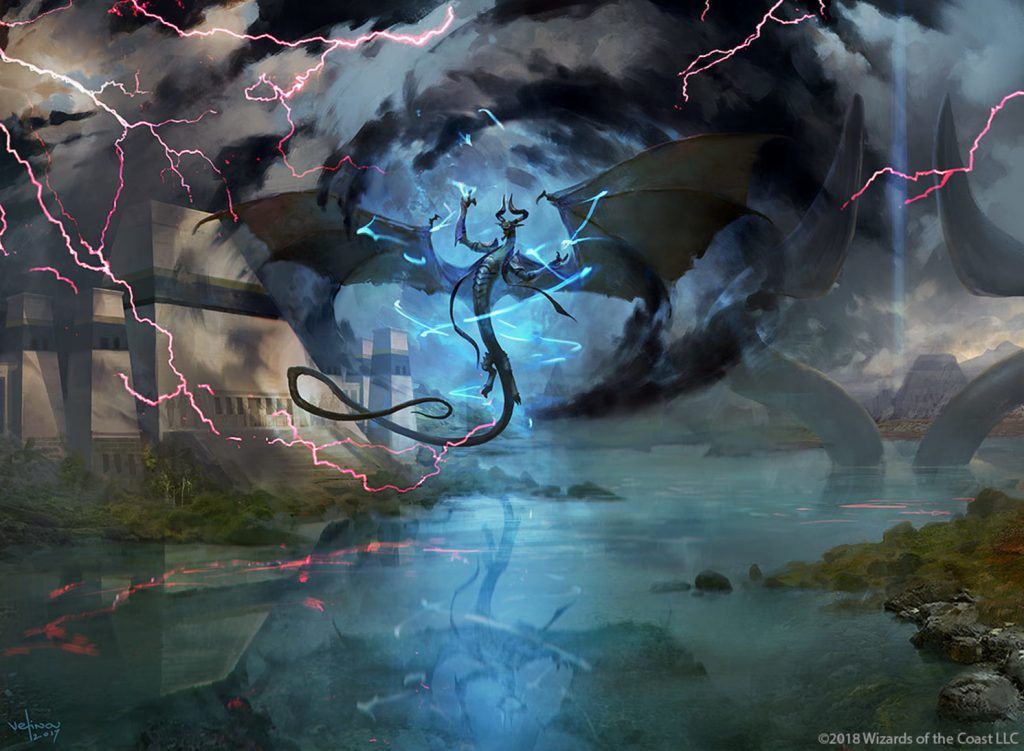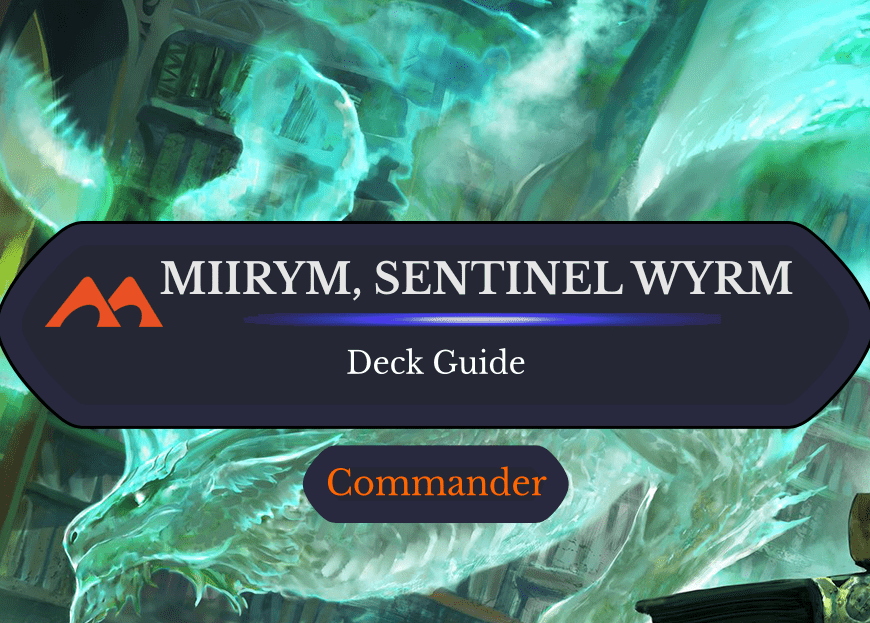Last updated on December 19, 2023

Knowledge and Power | Illustration by Jung Park
The idea of power levels in Commander is a point of contention for some Magic players. While I can definitely see the merit of being able to measure the relative power of your deck, a 1-10 scale is a somewhat nebulous rating system with a lot of room for subjectivity. One player might consider their weakest deck a two or a three simply because it loses consistently in their own play group. However, they might have a very competitive play group, and the deck might actually be more of a five or six.
Due to this confusion, there have been efforts from within the Magic community to try and make a more formalized way to identify different power levels. This way it’s easier for players to appropriately gauge how well their deck stacks up in a group of new players. While the method isn’t perfect, it’s better than simply trying to guess a deck’s power level with no real process behind it.
I’m going to go through a popular way to determine power levels and show you examples of what each power level typically means. This process is imperfect, and I suspect there’ll never be a 100% accurate way to do this. If you have suggestions for how this process could be improved, I encourage you to leave a comment and join the discussion on the r/EDH subreddit where players are often working on issues like this.
Tier vs. Power Level

Revelation of Power | Illustration by Eric Deschamps
Tiers are a more general term into which the power levels fall. The aim of tiers is to help make a more formalized category for each power level and make it easier to determine where your deck falls. There are five tiers, each with two power levels in them.
Power levels 1 and 2 fall into the Unfocused tier. This is where decks without a very clear win con tend to end up. These decks can be a result of poor deck construction, but they can also be intentionally bad/funny decks that are simply trying to pull off one very convoluted series of events.
Power levels 3 and 4 make up the Focused tier. These decks have a clearer goal for winning the game, but they still aren’t all that strong. These are very casual decks and may be where a lot of budget decks and precons fall.
Power levels 5 and 6 are in the Tuned tier. This is a tier for decks that are still more casual but have a good amount of synergy and a passable land base. You’ll see upgraded precons falling into this category a lot, especially if players just upgrade the land base to be a bit quicker.
Power levels 7 and 8 are considered the most powerful decks that are still meant for casual play. These decks run maybe one or two miscellaneous pet cards just for fun, but mostly they’re pretty well tuned for what they want to do. They’re slightly less efficient than the highest tier decks either because of budgetary restrictions or because their game plan takes a little longer to win.
Power levels 9 and 10 are the Competitive tier or what players refer to as cEDH decks. These decks have no room for a card that isn’t going to help them win or even a less efficient version of one. These decks tend to be very expensive because they require perfectly tuned mana bases and the most efficient card for any given effect.
What Is a Turncount?
Some players use a turncount method to determine what power level their deck should be. The basic idea is that you play your deck enough times to get a reliable sample size and note which turn it consistently wins on. The lower the turncount, the higher the power level of your deck.
Each tier is broken down into five turns, so for example if your deck wins between turns 0 and 4 consistently, it’s likely a competitive tier deck. While this is a nice method in theory, it isn’t without its flaws.
You’ll need to play a deck a good number of times to make an accurate determination based on turncount. Everyone has started a game with a lucky hand that sets them up for an early win, and everyone has kept a three-land hand just to never draw another land for five or more turns. Games like this throw off your turncount, so you’ll need to play even more before you can make an accurate power level measurement. Since power levels are meant to help players find the appropriate deck to play for a given game, it’s a little tricky navigating multiple play sessions until you can figure it out.
Another issue with the turn count strategy is that it doesn’t take win rate into account. You might have a super grindy stax deck or control deck that doesn’t win the game until turn five or six, but still has a higher win rate than a deck that wins on turn three but only 10% of the time.
It’s up to you whether you think the turncount method is right for you or whether you need to make adjustments based on the specific style of play your deck is going for. It’s also important to consider which decks you’re playing against. Just because you’re winning a lot early on doesn’t mean you have a Competitive tier deck if you happen to be going up against Unfocused decks which rarely win. I think a potentially more helpful way of determining your deck’s power level is just by looking at the breakdown of each tier and level and determining where exactly your deck happens to fit.
Power Level 1
These are decks that meet the legal requirements to be played in Commander, but not much else. The best example I can think of is when I first learned about Commander, I threw a deck together by picking a legendary creature I liked and then just crammed a bunch of cards from their color identity from my collection into the deck without any clear goal.
Even in more casual games, a deck at this level isn’t going to win all that often. If you win with a power level 1 deck, it’s likely that your opponents just left you alone long enough for you to squeak out a victory once they’d finished taking each other out.
Power Level 2
A level 2 deck is slightly more cohesive than a level 1 deck but still lacks a strong winning strategy. It’s more likely to depend on having a few very specific cards for some janky interactions without really having a consistent way of finding them. These could also be decks that have too many ideas put into them instead of just one clear strategy with ways to make it consistent.
Power Level 3
This is where I’d put the cheaper preconstructed Commander decks like the Starter Commander Decks from late 2022,or the supplemental Commander decks released alongside sets like Kaldheim that weren’t up to the same standard as a regular Commander product release. For homebrew decks, these would be decks that have an idea what they want to do and ways to do it but suffer from having a poor mana base. You’ll also usually see budget options of stronger cards, like a Darksteel Colossus instead of a Blightsteel Colossus.
Power Level 4
This is where you’ll see the stronger preconstructed decks. These decks have some splashy cards, but not a super consistent way to find them. You’re unlikely to see any infinite combos, but there’ll be some decent interactions built in. Mana bases are still subpar at this level.
Power Level 5
Level 5 decks are essentially if you took a precon gave it a more efficient land base. You’ll see some bond lands or shock lands, allowing multicolor decks to play a bit faster. Decks at this level also have a basic understanding of important elements that all decks need like card draw and removal and more specific cards that help support their basic strategy.
Power Level 6
Level 6 is the first place you’ll see some combos or other deliberately constructed win conditions. You’ll see a lot less tap lands at this stage, and if you do it’ll be something like Temples that give you an additional benefit or lifegain duals if they tie in with the deck’s strategy.
Power Level 7
At this point you’ll stop seeing as many cards that don’t strictly adhere to the theme of the deck. At this point, decks have become solely focused on winning the game, and usually through one or two very specific means. You’ll start seeing more format staples like Sylvan Library or Vampiric Tutor, and tap lands are largely gone by this point.
Power Level 8
By the time you reach power level 8, every spell in your deck is carefully chosen to work towards your winning strategy. There are no pet cards or generally good cards that don’t really fit with what you’re trying to do. You also have a very efficient mana base with fetch lands and dual or tri lands that can be searched for. The biggest distinction between power level 8 and cEDH decks is that they’re still slightly lower budget and lack some of the superefficient but also very expensive cards like the original dual lands.
Power Level 9
Level 9 is the first tier that’s typically considered cEDH. These decks prioritize perfectly crafted mana curves so you aren’t wasting any time or cards. You’ll usually either have a card to play or a means of responding to your opponents as soon as you take your first turn.
Power Level 10
A power level 10 deck is one that runs like a well-oiled machine. There’s plenty of interaction so you can stop your opponents from pulling off their game-winning combos, and you’ll also have a quick way to win the game yourself. Another important aspect of a perfectly built cEDH deck is that you have multiple ways to retrieve your game-winning cards if they’re countered or removed, so there isn’t an easy way to take you out of the game.
These are typically decks where budget is no problem, so you’ll see Reserved List cards like the original dual lands or Timetwister. Fans of PreDH might find these decks a bit soulless as they’re simply concerned with winning the game as quickly as possible.
Commanding Conclusion

Apex of Power | Illustration by Svetlin Velinov
Power levels can be a helpful way to compare the relative power of your deck to those of your opponents. When used correctly, this ranking system’s goal is to create games that are more fun for everyone because each deck involved has around the same chance of winning and nobody steamrolls the competition. That said, not everyone has the exact same thoughts on what each power-level means, so it might still be worth having a rule 0 discussion with your playgroup to make sure everyone is on the same page.
It’s also worth noting that this tiered system has the negative side effect of making more casual decks seem “worse” than others. This can somewhat defeat the original intention of the format as a fun place to play the cards you like but don’t have a home elsewhere. If you have more fun building decks specifically around themes or cards that you love, don’t worry if it’s technically a 4. Just do what’s the most fun for you.
What is your opinion on power levels? Is there a better method that could be used to determine relative strength? Do you find turncounts a reliable way to measure a deck’s power level? Let me know in the comments or on Draftsim’s Twitter.
Thank you for reading and see you next time!
Follow Draftsim for awesome articles and set updates:

Add Comment